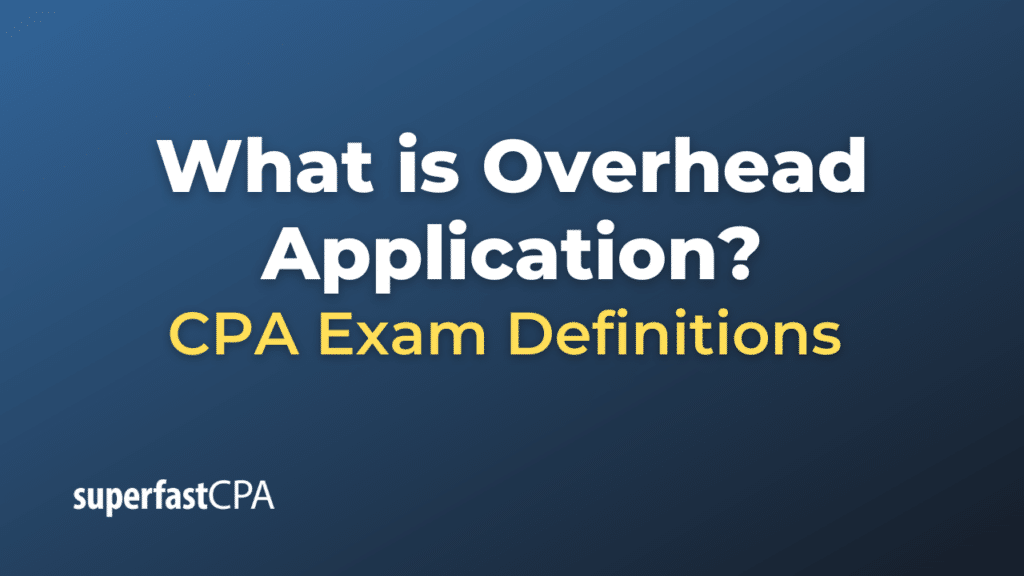Overhead Application
Overhead application is the process of adding overhead cost to the cost of products or services. This process is part of the costing methodology used in manufacturing and other types of businesses where it’s necessary to calculate the full cost of a product or service.
This process requires an overhead application rate, which is typically determined by dividing the total estimated overhead costs for a given period by the total estimated amount of the allocation base for the same period. The allocation base could be direct labor hours, machine hours, or any other cost driver that is considered to have a strong relationship with the incurrence of overhead costs.
Once the overhead application rate is established, it is then applied to the actual amount of the allocation base incurred in the production of each product or service. This results in the overhead cost that is applied or allocated to each product or service.
It’s important to note that overhead application is an estimate. The actual overhead costs may end up being different from the estimated costs, which can result in overapplied or underapplied overhead. This discrepancy must be adjusted for at the end of the accounting period.
For instance, if a company has estimated overhead costs of $100,000 and estimated direct labor hours of 10,000, the overhead application rate would be $10 per direct labor hour ($100,000 / 10,000 hours). If a product takes 5 hours of direct labor to produce, then the overhead applied to that product would be $50 ($10 per hour * 5 hours). This $50 is then added to the direct costs (materials and labor) to get the total cost of the product.
Example of Overhead Application
Let’s say there’s a company called ABC Manufacturing that makes a product called Widget X. ABC has overhead costs like rent, utilities, and administrative salaries which need to be applied to the cost of producing Widget X to get a complete understanding of the product’s total cost.
ABC Manufacturing decides to use direct labor hours as the base for applying overhead costs. For the upcoming year, they estimate $500,000 in overhead costs and 50,000 direct labor hours. This means their predetermined overhead application rate is $10 per direct labor hour ($500,000 / 50,000 hours).
Now, let’s say to produce one Widget X, it takes 2 direct labor hours. So, using the predetermined overhead rate, the overhead cost applied to each Widget X would be $20 ($10 per direct labor hour * 2 hours).
Therefore, the overhead application of $20 would be added to the direct costs (like materials and direct labor) to determine the total production cost of each Widget X. This total cost can then be used for various purposes, such as setting selling prices, making production decisions, and assessing product profitability.
It’s important to remember that the actual overhead costs and actual direct labor hours for the year might turn out to be different from the estimates. This could result in overapplied or underapplied overhead, which would need to be adjusted at the end of the year.














